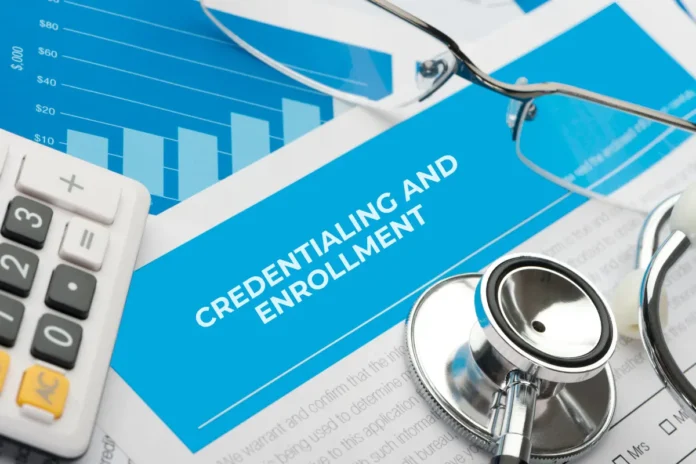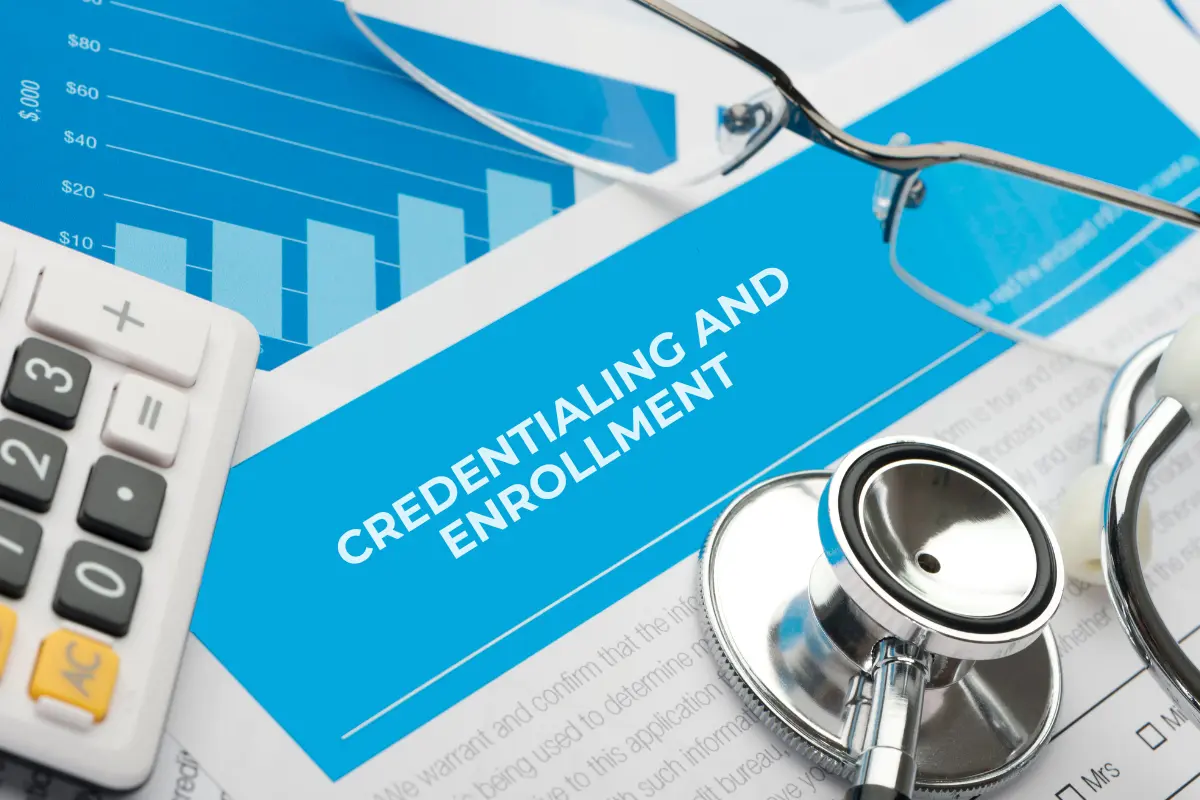Healthcare credentialing can feel like a never-ending bureaucratic obstacle course. You have worked hard to get your qualifications, but before you can see patients, insurance companies and hospitals want to verify every detail.
It sounds tedious, but without it, providers cannot practice, bill, or get paid. The good news? A well-structured system makes things smoother. Let’s break it down in a way that is easy to digest.
Key Points
- Credentialing verifies provider qualifications before allowing them to practice.
- Insurance networks, hospitals, and clinics require credential verification.
- Errors or delays can slow down job placements and reimbursements.
- Using credentialing services speeds up the process significantly.
- Proper documentation and consistent follow-ups prevent unnecessary rejections.
What Is Healthcare Credentialing, and Why Does It Matter?
Credentialing ensures that a provider has the proper qualifications, education, and training to deliver care. Think of it as an official stamp of approval that confirms a provider is who they say they are and has met all necessary standards. Without it, a provider cannot work in a hospital, join an insurance network, or bill for services.

Key Benefits:
- Protects patients from unqualified practitioners.
- Ensures compliance with industry regulations.
- Prevents fraud in the medical field.
- Allows providers to receive insurance reimbursements.
Without proper verification, providers risk job delays, denied claims, or even legal issues. Every credential matters, and missing just one document can halt the entire process.
How the Credentialing Process Works
The process involves multiple steps, each requiring attention to detail. Here is a breakdown:
- Application Submission – Providers submit documentation, including licenses, degrees, and malpractice history.
- Primary Source Verification – Third parties verify all documents directly with the issuing organizations.
- Committee Review – A panel evaluates qualifications and background checks.
- Approval & Enrollment – Upon approval, providers are enrolled with hospitals, networks, and insurance panels.
Each step involves deadlines, forms, and follow-ups, making it essential to track progress consistently.

The Role of Credentialing Services in Speeding Up the Process
Using professional services like Credex Healthcare can make an enormous difference. Their streamlined process ensures that:
- Insurance enrollments happen on time.
- Providers avoid unnecessary paperwork delays.
- Applications are submitted to over 2,000 insurance providers nationwide.
- CAQH & PECOS setup is handled efficiently.
- Approvals happen twice as fast compared to traditional methods.
For professionals juggling patients, insurance applications, and hospital requirements, a service like this simplifies the workload significantly.
Common Challenges in Credentialing and How to Overcome Them
The process is notorious for delays. Errors, missing documents, and slow response times create unnecessary frustration. Here’s how to avoid major setbacks:
- Stay organized – Maintain digital copies of all documents for easy access.
- Submit everything at once – Partial applications get stuck in limbo.
- Double-check forms – Even minor typos can trigger rejections.
- Follow up – Regularly check on application statuses instead of waiting.
- Use a professional service – Experts handle common roadblocks efficiently.
Many providers struggle with rejected applications due to overlooked details. Being proactive prevents unnecessary setbacks.

How Long Does Credentialing Take?
Expect the process to take anywhere from 60 to 120 days. Several factors influence the timeline:
- The responsiveness of primary sources.
- The efficiency of the reviewing committees.
- Whether additional documentation is requested.
- The type of insurance enrollments needed.
Some providers get through faster with pre-existing documentation, while others may wait longer due to delays at verification checkpoints.
Key Documents Required for Credentialing
To prevent hold-ups, gather all necessary documents in advance:
- Medical license and board certifications.
- Proof of education and training.
- Liability insurance information.
- Work history and references.
- Drug screening and background check results.
Submitting everything at once reduces back-and-forth communication and speeds up approval.

Why Insurance Enrollment Matters for Providers
Without insurance enrollment, providers cannot bill patients’ health plans. This limits patient access and causes financial difficulties. Some common insurance panels include:
- Medicare & Medicaid – Essential for patients relying on government-funded plans.
- Private Insurance Networks – Cover the majority of insured patients.
- Managed Care Organizations (MCOs) – Require strict credentialing rules.
Getting approved means providers can start seeing patients and receiving reimbursements without unnecessary delays.
The Difference Between Credentialing and Privileging
Many people confuse the two terms, but they serve different functions:
- Credentialing verifies qualifications and experience.
- Privileging determines what specific services a provider is allowed to perform within a hospital or clinic.
A provider may be credentialed but still need additional approvals for performing certain procedures. Each institution sets its own privileging requirements based on experience and expertise.

How Technology Is Changing the Credentialing Process
New systems reduce delays and increase efficiency. Innovations include:
- Automated verification tools – Speed up primary source checks.
- Cloud-based document management – Prevent lost paperwork.
- AI-Driven compliance checks – Reduce human errors.
- Electronic signature integrations – Eliminate printing, signing, and mailing forms.
Providers embracing digital tools experience fewer rejections and faster approvals.
Tips for Staying Credentialed Without Stress
Once approved, providers must maintain credentials. Follow these tips to stay compliant:
- Track expiration dates – Set reminders for renewals.
- Update information regularly – Address changes and new certifications need reporting.
- Use a credentialing service – Professionals handle renewals proactively.
- Keep copies of everything – Always have backup documentation ready.
Neglecting renewals can result in lost practice privileges and financial disruptions.

The Most Common Credentialing Mistakes
- Misspelled names – A single letter mistake can delay approvals.
- Outdated contact info – Slows down primary source verification.
- Missing work history – Gaps in employment need proper explanations.
- Forgotten signatures – Simple but common errors.
Avoiding these mistakes prevents unnecessary delays and rejections.
Conclusion
Credentialing is a crucial process that ensures qualified professionals can provide care and receive reimbursements. While the process feels frustrating, understanding key steps makes it easier. Organizing documents, following up regularly, and using expert services can significantly reduce delays. By staying proactive, providers can focus on patient care without administrative headaches.







